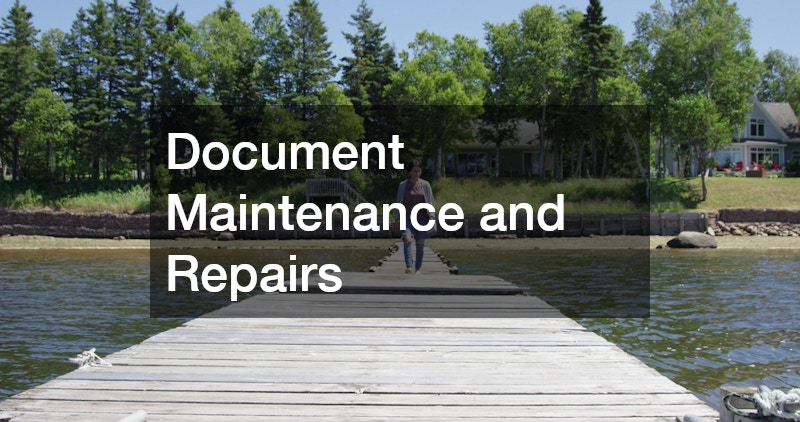Owning a dock comes with the responsibility of keeping it in good condition year-round. A well-maintained dock not only ensures safety but also extends its lifespan and enhances the enjoyment of your waterfront property. From routine inspections to seasonal upkeep, following the right practices can make all the difference in preventing damage and maintaining structural integrity.
Inspect Your Dock Regularly
The first step in effective dock maintenance is conducting regular inspections. Walk along the dock and look for loose boards, protruding nails, cracked planks, or weakened support beams.
Pay special attention to high-traffic areas and connections between the dock and shoreline, as these points often bear the most stress. If your dock is made of wood, check for splintering or signs of rot. For metal docks, look for rust, corrosion, or bending. Early detection of these issues allows you to address problems before they worsen, reducing the risk of accidents and keeping the dock in serviceable condition.
Clean the Dock to Prevent Buildup
Dirt, algae, and other debris can accumulate quickly on dock surfaces, making them slippery and potentially unsafe. Regular cleaning helps maintain both the safety and appearance of your dock. Use a broom to sweep away leaves, twigs, and dirt, and rinse the dock with fresh water to remove salt or grime. For stubborn stains or algae growth, a gentle scrubbing with a brush and environmentally friendly cleaner can restore the surface without harming nearby water or wildlife. Consistent cleaning not only improves traction but also helps prevent long-term material damage caused by moisture and organic buildup.
Protect the Structure from Water Damage
Water exposure is the greatest challenge for any dock, so protecting it from prolonged moisture is critical. If you have a wooden dock, consider applying a sealant to help repel water and reduce the risk of warping, splitting, or rotting. Metal docks can benefit from anti-corrosion treatments to shield them from rust. Additionally, inspect the dock’s hardware and fasteners to ensure they remain tight and free from corrosion. Even small measures like these can significantly extend the life of your dock.
Check for Pest or Marine Growth
Depending on your location, docks can be affected by marine growth such as barnacles, mussels, or algae. These organisms can weaken structural components and create slippery surfaces. Periodically inspect the underside of the dock for any signs of marine buildup. Removing these growths promptly can prevent long-term damage and maintain safe walking surfaces. In areas with high pest activity, watch for signs of insects or animals that may chew on wood or create nests in dock structures.
Maintain Dock Hardware and Accessories
Hardware plays a critical role in keeping your dock stable and secure. Regularly inspect bolts, screws, hinges, and cleats to ensure they are tight and free from rust. Replace worn or damaged parts immediately to maintain the dock’s stability. If you have ladders, bumpers, or boat ties attached to the dock, make sure they are in good working order. Even small hardware issues can compromise safety and lead to more extensive repairs if left unchecked.
Adjust for Seasonal Changes
Seasonal changes can put unique stress on docks. In colder climates, ice can damage pilings and decking, while in warmer areas, intense sun exposure can cause fading and weakening of materials. Before winter, remove or secure any items that could be damaged by freezing conditions, and consider pulling out floating docks to prevent ice damage. In the spring, inspect the dock thoroughly for signs of wear caused by winter weather and make necessary repairs before heavy use begins. In warmer months, protect surfaces from excessive UV damage with sealants or coverings.
Keep Surrounding Areas Clear
The area around your dock plays a role in its longevity. Overgrown vegetation can trap moisture against the dock, leading to rot or rust, while debris floating in the water can collide with and damage the structure. Regularly clear away brush and remove any floating objects near the dock. Keeping the surrounding water and shoreline free from obstructions also enhances safety for swimmers and boaters.
Prioritize Safety Features
Dock safety features should always be in good condition. Non-slip surfaces, railings, ladders, and lighting help prevent accidents, especially during low-light conditions or when the dock is wet. Replace worn or broken safety equipment immediately, and test lighting fixtures regularly. These safety checks are essential for protecting both you and your guests.
Document Maintenance and Repairs
Keeping a simple log of your dock maintenance activities can be incredibly helpful. Record the dates of inspections, cleanings, and repairs, as well as any materials or products used. This record makes it easier to track recurring issues and plan future maintenance tasks. It can also be beneficial if you ever need to provide proof of upkeep for insurance or property value purposes.
A proactive approach to dock maintenance ensures that your dock remains safe, functional, and attractive for years to come. By inspecting regularly, cleaning thoroughly, protecting against water damage, and staying ahead of seasonal changes, you can prevent small problems from becoming major repairs. Whether your dock is used for boating, fishing, or simply enjoying the water, consistent care will preserve its condition and keep your waterfront experience enjoyable.

